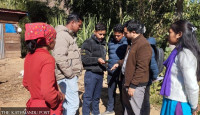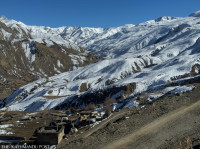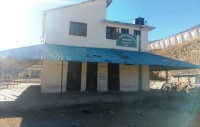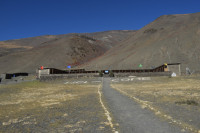Karnali Province
Tourists suffer without support as budgets for Rara, Shey Phoksundo sit idle
Inadequate planning and unutilised funds have stalled tourism development at the lakes despite their potential to become major attractions, while the locals’ sources of income remain limited.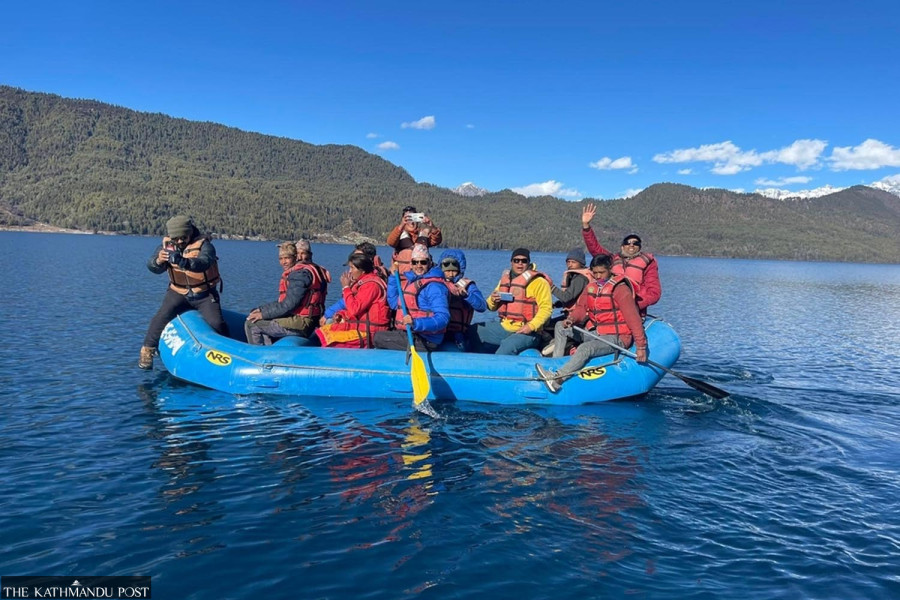
Krishna Prasad Gautam
The government established Rara National Park 49 years ago to protect Nepal’s largest lake, Rara. In 1976, the area was designated a protected zone, and nearly 450 families were relocated to Banke and Bardiya.
However, due to limited funding and a lack of proper planning, organised infrastructure development has been minimal in the area, and locals have not been able to reap the benefits they had hoped for.
“Everyone, from workers to boat operators, transport entrepreneurs and hoteliers, is benefiting from Pokhara’s Phewa Lake,” said Kamal Rokaya, a local of Rara. “But we haven’t gained any substantial benefits, apart from highlighting the fact that it’s Nepal’s largest lake.”
The lack of physical infrastructure in Rara has hindered a potential increase in tourist arrivals, while the locals’ sources of income remain limited. “There is no development nor any way for us to earn,” Rokaya said.
Local leader Karna Rawal said that the government’s neglect has forced residents of the buffer zone areas to live in poverty for years.
“Since the national park has not allowed the construction of roads, electricity, and other infrastructure, locals have been deprived of basic development,” he said.
Mahesh Neupane, senior conservation officer of the park, said that the federal government allocates an annual budget of Rs40 to 60 million for the park. However, nearly 60 percent of this budget is spent on salaries and allowances, limiting the funds available for infrastructure development.
Since the start of the current fiscal year, the park has generated around Rs1 million in revenue from tourists visiting Rara. Neupane said 17,000 tourists visited Rara last year, generating nearly Rs4.7 million in revenue. He added that 30 to 50 percent of this revenue was allocated to develop the buffer zone areas.
Min Rawal, chairperson of the Buffer Zone Development Committee, said that the lack of income-generating programmes in the buffer zone areas has left locals struggling financially.
Except for a few, locals have been unable to find employment due to inadequate tourist arrivals.
There are only two large hotels near Rara Lake where tourists stay, according to Rawal. “We even built homestays for visitors, but due to the low tourist turnout, these homestays are now on the verge of closure,” he said. “Local products remain unsold, and if we could train local youths and employ them as tourist guides, it might help curb the trend of seeking employment abroad.”
Locals have voiced frustration at the lack of progress in Rara Lake's development despite annual budgets allocated for the purpose. Over the past five years, most federal and provincial governments’ budgets for Rara’s development have gone unspent. Four years ago, the federal government earmarked Rs6 million for a tourist information centre and Rs8 million for elevated huts around the lake, but the funds were ultimately frozen.
Community leader Rup Bahadur Malla said tourists suffer as budgets remain unspent. “There are neither proper roads nor adequate accommodations for tourists,” he said. “Without quality hotels, we have no choice but to make tourists sleep in tents, often on an empty stomach.”
According to records from Rara National Park, nearly Rs70 million allocated for the lake’s development over the past three years remained unspent and was frozen.
“If the budget for infrastructure development had been utilised effectively, the basic needs of tourists could have been addressed,” Neupane said. “There has been virtually no infrastructure development over the past three years.”
He said funds were frozen due to haphazard allocation, inadequate budget provision, and delayed disbursement near the end of the fiscal year.
Last year, Rs20 million was allocated to construct a cycle track in Rara, but only one kilometre was completed due to the negligence of the contractor, Shankar/Malika Construction Services. Similarly, the provincial government allocated Rs2.5 million for homestay construction in the previous fiscal year, but the project remains incomplete.
The Shey Phoksundo is also facing a similar fate. Around 5,000 tourists annually visit Nepal’s deepest lake. However, reaching the lake is a significant challenge due to inadequate infrastructure. Visitors must undertake a two-day trek from Dunai, the district headquarters of Dolpa, to get to the lake.

“Reaching there feels like winning a battle. Sometimes it’s hard even to find a path. On the treacherous and steep routes, if you slip, there’s no chance of survival,” said Harish Chandra Shah, who visited Phoksundo Lake two weeks ago.
“If bridges were built over the rivers along the route and a horse track was constructed, it would make the journey much easier for tourists.”
Shah said the lack of sufficient hotels along the way creates significant challenges for those trying to reach the lake.
Due to budget constraints and the absence of a master plan, locals have reaped limited benefits from the lake, said Nima Lama, ward chairperson of Shey Phoksundo Municipality-8.
“If tourists bought local products as souvenirs, it could help locals achieve self-sufficiency. Employing young people as guides would provide them with local employment opportunities,” he said. “Establishing homestays could also have been an effective way to create jobs for the community.”
According to him, although the annual budget allocated for the development of the lake through the national park and provincial government ranges from Rs20 to 40 million, most of the funds remain frozen.
Due to the difficult and rugged geography, infrastructure development around Phoksundo Lake has been challenging, said Nurendra Aryal, the chief conservation officer of Rara National Park. “Additionally, the park’s internal revenue is low, so we have not been able to involve locals in livelihood activities,” he said.




 9.12°C Kathmandu
9.12°C Kathmandu
